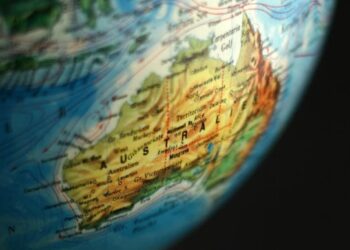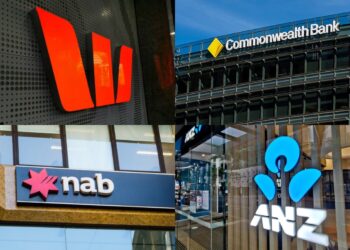In his address to the National Press Club on Wednesday, Treasurer Jim Chalmers said the primary purpose of the budget was “helping people now, and fighting inflation in the process”, but the longer sweep and context is “important too”.
“We need to build a new generation of prosperity for our people and communities – and the budget is about that too,” Chalmers said.
“You’ve heard it said and written before that Australia’s had three economies. The first was colonial and agricultural. The second, industrial, behind a tariff wall. And the third, when Paul and Bob opened us up to the global economy without selling out.
“What we are now creating together is Australia’s fourth economy. By grasping the vast industrial and economic opportunities of the global net zero transformation.”
Labor’s plan is to make Australia an “indispensable part” of the global net zero transformation.
“Combining technology and human capital. Heavy industries, new industries, and the care economy. Leveraging our traditional strengths but powered by cleaner and cheaper energy,” Chalmers said.
“That’s what a Future Made in Australia is all about. Modernising our economy and maximising our opportunities in a world of churn and change, and on a path to net zero.”
According to the Treasurer, the Future Made in Australia is all about being “strategic, rather than nostalgic”.
“That’s what we’re doing. By investing and engaging, not retreating or protecting. So that out of fragmented supply chains and new emerging markets, we can become that indispensable part of that new net zero economy – and help power the future.”
The balance, he said, is between targeted public investment and the much bigger pool of private investment the government hopes to attract and unleash, not replace.
“Not a free‑for‑all of public spending, crowding out private capital, but careful, considered incentives to crowd it in,” Chalmers said.
“That’s what the Future Made in Australia Act is about. Imposing the rigour and robustness and the framework. Attracting and enabling private investment. Making Australia a renewable energy superpower. Value‑adding to our resources and strengthening our economic security. Backing Australian ideas and innovation, in science and technology. And investing in people and place – in skills, education, and our regions.
“The act will help us to make targeted, impactful public investments to get value for money.”
What’s in the budget
This budget invests $22.7 billion over the next decade to build a Future Made in Australia. This plan, according to the government, is about maximising the economic and industrial benefits of the move to net zero and securing Australia’s place in a changing global economic and strategic landscape.
In the 2024–25 budget, five industries are aligned with the National Interest Framework:
- -Renewable hydrogen
- -Critical minerals processing
- – Green metals
- – Low carbon liquid fuels
- – Clean energy manufacturing, including battery and solar panel supply chains
Moreover, the government is allocating $3.2 billion to the Australian Renewable Energy Agency for technology commercialisation supporting the net zero transformation, along with a $1.7 billion Future Made in Australia Innovation Fund for deploying innovative technologies in priority industries like green metals and low carbon liquid fuels.
Also, a part of the Future Made in Australia initiative is the provision of $17.3 million over four years from 2024–25 (and $3.1 million per year ongoing) to promote the development of sustainable finance markets in Australia.
This involves $10 million over four years starting 2024–25 ($1.9 million annually thereafter) for the Australian Securities and Investments Commission (ASIC) to tackle greenwashing and financial misconduct, and $5.3 million over the same period ($1.2 million annually) for Treasury, ASIC, and the Australian Prudential Regulation Authority (APRA) to implement the sustainable finance framework, including green bond issuance.
Additionally, the government plans to allocate $399.1 million over five years starting 2023–24 (with added funds later) to boost resources for the Net Zero Economy Authority, Department of Employment and Workplace Relations, and Fair Work Commission, aiming to facilitate a smooth transition to a decarbonised economy and ensure benefits for Australia, its regions, and workers.
New front door
Alongside other reforms, budget measures under the Future Made in Australia umbrella are aimed to improve the regulatory settings and approval processes, create new standards and new markets, and a new front door to make it easier for investors, the Treasurer said.
“All these initiatives will change the way we attract and deploy and improve the flow of capital in our economy. And help create a new generation of prosperity for our people,” Chalmers added.
In its budget reaction statement, the Financial Services Council (FSC) applauded the budget’s recognition of the “important role” investors play in supporting Australia’s economic growth.
The FSC said it “welcomes” the “front door” strategy and the government’s commitment to consult on how it can facilitate investments, along with the new funding for a product labelling regime for investment products, issuing green bonds, and developing a regulatory framework that complements international frameworks.
Blake Briggs, chief executive officer of the FSC, said: “Australia’s investment community is key to the transition to a low-carbon economy and the federal budget recognises the importance of developing an internationally aligned regulatory regime and a clear investment product labelling framework.”







